Viscom Exam Semester 1
1/54
There's no tags or description
Looks like no tags are added yet.
Name | Mastery | Learn | Test | Matching | Spaced | Call with Kai |
|---|
No study sessions yet.
55 Terms
element - point
Used to reference a mark to show the location or position of something on a map or diagram. It can be shown as a dot, small shape or symbol to represent an object or indicate an identity. Draws eye to important information.
element - line
A continuous mark made on a surface (it can be organic • geometric and precise • directional • curly • fine or thick • Solid • generated manually or digitally • broken • irregular • repeated • vertical or horizontal)
element - shape
Two dimensional created by a closed outline. Can be organic (flowers or seashells) or geometric (sharp and harsh edges), symmetrical or asymmetrical.
element - form
Three-dimensional nature of an object. Enhanced by other elements such as tone, texture or colour.
element - tone
Shadows and highlights found in drawings and photographs. Can be used to create form or illustrate a surface quality and create the illusion of space and depth.
element - texture
Surface quality of an object and refers to the way objects’ or materials’ visual appearance is drawn.
element - colour
one of the more powerful design elements, with its ability to have a significant impact on people’s emotions and their ability to concentrate and learn. It is used in final presentations to attract a specific target audience or as part of a client expectation in a brief. (Can be complementary, monochromatic, hue, tint, saturation, analogous and harmonious)
element - type
Physical representation of words we speak and is used to put these words down on paper. Available in many fonts, and is used to communicate our thoughts and ideas. (bold, italic, uppercase, lowercase, handwritten, contemporary, script, serif or sans serif, emotive).
Principle - figure/ground
the shapes, space or forms within a composition. To create more of a visual impact, or to emphasise a message or idea, a designer may deliberately highlight the f____ from its b______ to create hierarchy or a focal point within a composition.
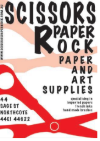
principle - balance
the even (though not necessarily equal) distribution of the design elements to create harmony within a composition. (can be symmetrical, asymmetrical, or radial).
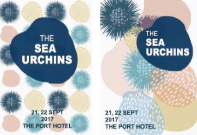
Rule of thirds
divide your image or document into thirds both vertically and horizontally so that you end up with nine equal sections. When putting together your composition, place the main subject matter where the lines intersect.
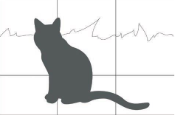
Golden ratio
mathematical ratio used to describe what is considered a perfect composition. Using the ratio will assist you in creating harmony, balance and proportion within a composition
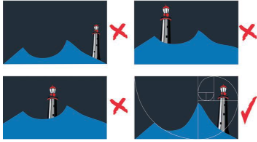
principle - contrast
two or more elements that have opposite qualities are placed together.
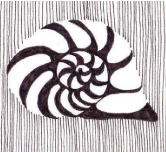
principle - cropping
can change the emphasis or direction of a design. An image may be c_______ to emphasise one particular aspect of a design or to present information more clearly.
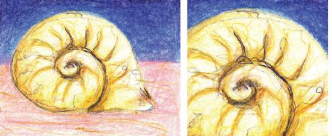
principle - hierarchy
The elements within a composition can be ordered according to their importance.
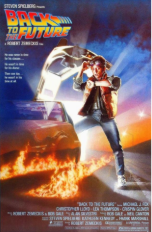
principle - scale
the size you may choose to draw or place an object in relation to the ground it is placed upon
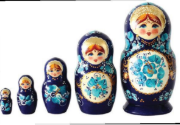
principle - proportion
the comparative relationship between components within a visual communication
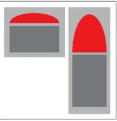
principle - pattern
By simply repeating an element such as point, line or shape you instantly create this principle.
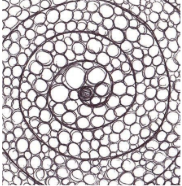
Gestalt - proximity
grouping. Elements that are placed close together can be perceived as part of the same group, that they are connected. This may encourage focus on one part of a design because the spacing of the elements is closer than another area.
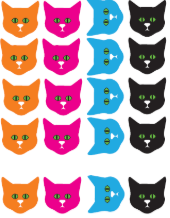
Gestalt - continuity
This principle directs our eye to follow a straight line or curved path. Our eyes (mind) will follow a similar line from one spot to another. So powerful is this principle that our mind might ignore a change in colour or shape to stay on the continuous path.

Gestalt - similarity
Our brain tries to group things that appear similar to each other, and perceive them as a group
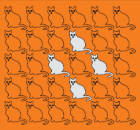
Gestalt - Closure
Science has proven that our brains prefer complete shapes. So, when looking at images with empty parts, we fill them in to make complete images.

Gestalt - common fate
This principle is when you group related objects close together or in the one region. This is similar to proximity.

Gestalt - figure-ground
Our brains are challenged by uncertainty, and we look for solid elements in an image to make connections by separating the foreground and the background. Our brains find it difficult to interpret an object as a figure and as a background at the same time
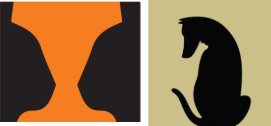
Gestalt - focal point
asserts what we see first in a visual image. It is what our brain sees first
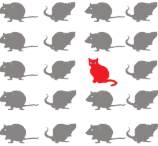
Good design is innovative
Technological development is always offering new opportunities for innovative design. But innovative design always develops in tandem with innovative technology, and can never be an end in itself.
Good design makes a product useful
A product is bought to be used. It has to satisfy certain criteria, not only functional, but also psychological and aesthetic. Good design emphasises the usefulness of a product whilst disregarding anything that could possibly detract from it.
Good design is aesthetic
The aesthetic quality of a product is integral to its usefulness because products we use every day affect our person and our well-being. But only well-executed objects can be beautiful.
Good design makes a product understandable
It clarifies the products structure. Better still, it can make the product talk. At best, it is self-explanatory.
Good design is unobtrusive
Products fulfilling a purpose are like tools. They are neither decorative objects nor works of art. Their design should therefore be both neutral and restrained, to leave room for the users self-expression.
Good design is honest
It does not make a product more innovative, powerful or valuable than it really is. It does not attempt to manipulate the consumer with promises that cannot be kept.
Good design is long-lasting
It avoids being fashionable and therefore never appears antiquated. Unlike fashionable design, it lasts many years - even in today's throwaway society.
Good design is thorough down to the last detail
Nothing must be arbitrary or left to chance. Care and accuracy in the design process show respect towards the consumer
Good design is environmentally friendly
Design makes an important contribution to the preservation of the environment. It conserves resources and minimises physical and visual pollution throughout the lifecycle of the product.
Good design is as little design as possible
Less, but better - because it concentrates on the essential aspects, and the products are not burdened with non-essentials. Back to purity, back to simplicity.
Four phases of the design process
Discover, define, develop, deliver
Brand identity
refers to and promotes a company’s mission and brand personality. A designer researches the brand to understand the company’s core values, and then builds an identity. is not the company logo, although the logo can be considered as part of this.
Company brand
is intangible (meaning you cannot see or touch it) and is not based upon aesthetics or visual images; rather a brand relates to the values and culture of a company or organisation.
Visual identity
is how designers express the brand such as logo designs, brand colour palettes, typography, slogan or tag lines . It can even include smell or the way a product feels in your hand.
Visual language
Form of communication that visually communicates messages rather then by written or spoken words. (colours, typography, shapes, patterns, hierarchy).
Economic factors
budget, material costs, production methods, and logistics influence design, but cost-cutting doesn't necessarily mean compromising quality, as efficient methods like zero waste sewing can still produce high-quality designs.
Technolgical factors
include tools like AI, VR, and 3D modelling software that enhance the design process, making it faster and more efficient, while innovations like 3D printing enable rapid prototyping and realistic product simulations, ultimately facilitating more human-centred and interactive designs.
Cultural factors
language, customs, religion, politics, and social trends influence design by shaping how people perceive and interact with products, making it essential for designers to understand and empathize with the culture they are designing for.
Environmental factors
focus on minimizing planetary impact by reducing raw material use, eliminating hazardous substances, conserving energy, extending product life cycles, and promoting recycling and reuse.
Social factors
influence behaviors and interactions, as seen during COVID-19 with designs like PPE and social distancing markers, exemplified by Board Grove Architects' stool for the 2020 MPavilion, which facilitated flexible, socially distanced seating arrangements.
Behaviours
Fashion design can influence trends in what we wear • If a keep cup is well designed, a person will be more inclined to carry it around, and avoid takeaway cups.
Interactions
Engaging playground equipment can draw children and families to interact with an environment.
Systems
A designer might consider how many steps it takes to complete an action before people give up.
outcomes
An architect might include large windows to increase natural light to help relax and ease occupants’ stress levels. • A graphic designer might use a specific type of paper to encourage people to recycle.
Human centered design
when a designer puts people first during the design process. target audience/stakeholders are at the core of the design process (empathy at the core of design process).
Circular design practices
set of design principles aimed at creating products and systems that minimize waste, maximize resource efficiency, and promote the reuse, recycling, and regeneration of materials
Components of the design brief
client, communication need, target audience, stakeholders, purpose, context, constraints
Divergent thinking strategies
• brainstorming – share with stakeholders or your peers for more input • mind mapping • empathy mapping • interviews • surveys.
Convergent thinking strategies
PMI, SWOT analysis, POOCH (problems, options, outcomes, choices), brand matrix
typographic conventions
typeface selection, font size and hierarchy, line spacing, colour and contrast